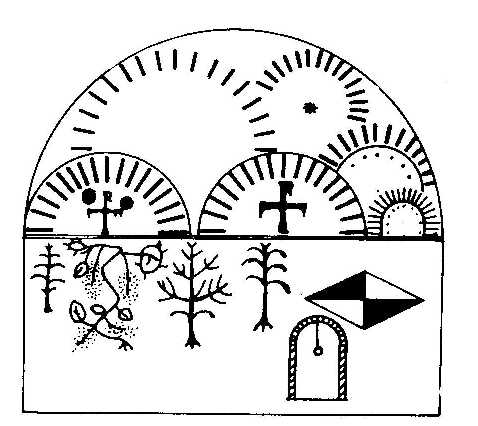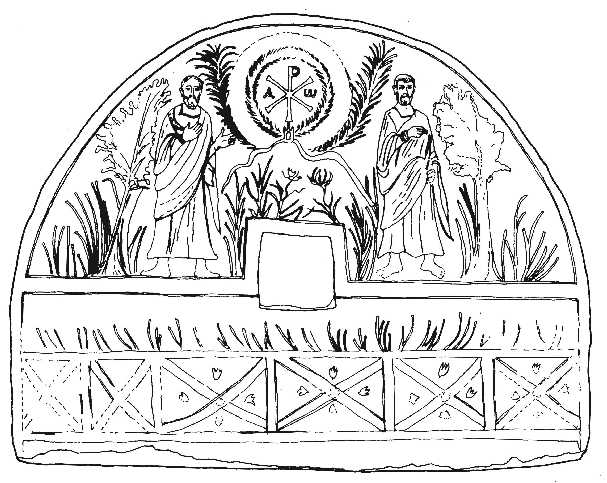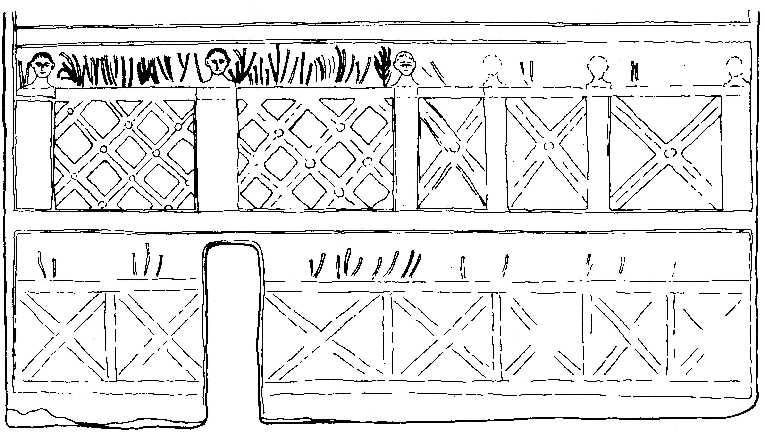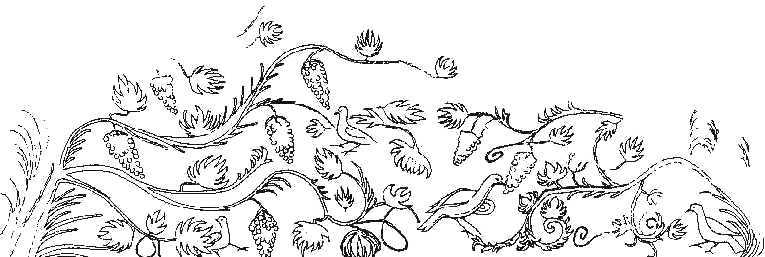
Out of the crypts known so far, only five were frescoed, and they must have belonged to a wealthier class. One of them, located near the Bridge of Youth, was destroyed during the construction of the road. It was semi-cylindrically vaulted and had only one frescoed wall. Thanks to the preserved drawing, we know that the lower zones contained three stylized trees and a vine, a ciborium with an icon lamp, a rhombus with crossing fields in white and red, then a monogrammatic cross, stars and radial arches. It is now hard to understand this stylized decoration.

The fresco from the destroyed early-Christian crypt in Jagodin Mala
We have no other data about three crypts, except that they were frescoed.

The early-Christian crypt in Jagodin Mala, the west wall frescoes
The only fresco decoration that is completely preserved is the one in the crypt located in the yard of the High-School Youth Center. Beside four standing portraits of saints, herbal wreaths and birds, here we find the Monogram of Christ surrounded by a palm-leaf wreath with the apocalyptic alpha and omega letters.

The Early-Christian crypt in Jagodin Mala, the north wall frescoes
The Chi-Rho inscription implies the presence of Christ, and it is also called the Sign of Constantine, as Constantine had adopted it as his military standard (labarum), the flag under which he defeated his rival Maxentius - Hoc signo vinces (in this sign thou shalt conquer). The apocalyptic letters alpha and omega symbolize the beginning and the end of everything in Christ, while the palm-leaf wreath represents a reward for victory.

The Early-Christian crypt in Jagodin Mala, the vault
It might not have happened just by a pure chance that this sign had appeared in the very birthplace of Constantine's only several decades after the recognition of Christianity.
Like the Christian religion after it had been recognized, particularly after 380, when the Christianity was pronounced the only religion in the Empire by the Edict of Thessaloniki, the Christian art also spread very quickly, taking the wide territory of Illyricum and the town of Niš. The preserved crypt with its figurative representations leads to the conclusion that its artist might have found his models in the monumental fresco painting of the contemporary Niš. The fresco decoration of the Niš crypt exceeds the local limits and assumes an important position in the art of Roman catacombs and Christian antiquity. It represents a well-grounded reason for stating that Niš was a strong center of Christian art and iconography.